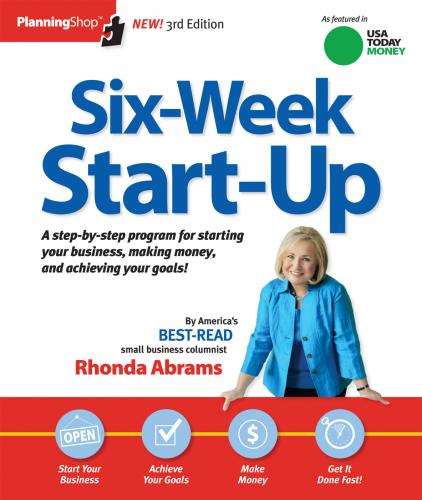The worksheets in this section are also the starting point for articulating your business concept and identifying your niche and customer base.
Check It Out
What are the qualities of a successful entrepreneur? Read Rhonda’s “Think Like an Entrepreneur” article www.planningshop.com/thinkentrepreneur
My role models
Do you want to be another Bill Gates? Do you see yourself as a future Oprah Winfrey? Or do you look up to your uncle who ran his own store or your older sister who has been self-employed for 10 years?
Many of us are fortunate enough to know of people in business whom we admire or would like to emulate. You may know them personally, or you may have read about their business practices or success.
Thinking about your role models can help you clarify your own business vision. If your business hero is Bill Gates, what about him do you admire? His ability to make a great deal of money? Build a huge business? His marketing and strategic capabilities? Or do you admire his technical knowledge?
Take a moment to think about whom your business role models are, by completing the “My Role Models” worksheet on page 11.
My “bright idea”
What excites you about your business idea? If you have two or three ideas, what do you like best about each one? Where did the idea come from? How has it evolved since you started the process of turning the idea into a business?
By looking at how you initially got the inspiration for your business, you can take the next step toward determining how you might get others excited about your business also. That’s the start of taking an idea and turning it into a plan, which becomes a successful business. You will also find it useful to have a record of what initially inspired you, to which you can refer from time to time, especially as your business grows. Use the worksheet on page 13 to record your initial business idea.
MY “BRIGHT IDEA”
Use this space to record your initial business idea(s). This will become a starting point for defining your business concept and why it can be competitive in the marketplace (on page 14). It will also be useful as you prepare your marketing materials and write your “Elevator Pitch” in Week Six.
|
|
|
|
|
|
MY BUSINESS CONCEPT
Answering the following questions will help you clarify your concept:
|
|
|
|
|
|
|
|
|
|
|
|
|
|
|
|
Meeting needs is the basis of all business. You can devise a wonderful new machine, but if it doesn’t address some real and important need or desire, people won’t buy it, and your business will fail. Even Thomas Edison recognized this fact when he said, “Anything that won’t sell, I don’t want to invent.”
Identify needs
Now that you know what your spark and passion is regarding your idea, use the worksheet on page 14 to determine how your product or service will meet new or existing needs in the marketplace.
A concept’s success often hinges on whether it does something newer or better than anyone else. Being new or better can take many forms:
BASIC BUSINESS DESCRIPTION
Use this worksheet to develop
